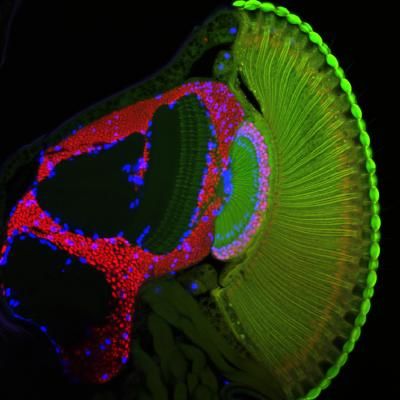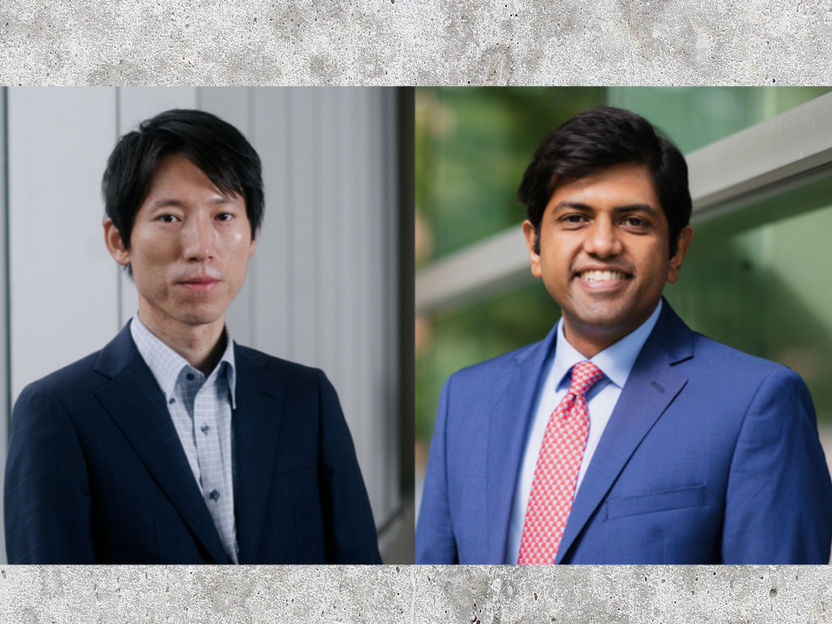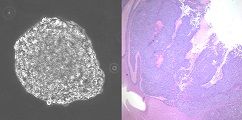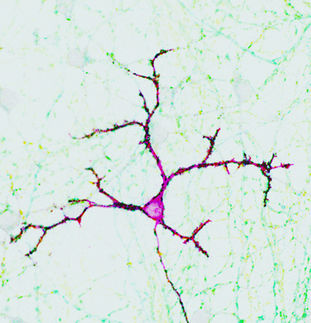Partnership of genes affects the brain's development
The human brain consists of approximately one hundred billion nerve cells. Each of these cells needs to connect to specific other cells during the brain's development in order to form a fully functional organism. Yet how does a nerve cell know where it should grow and which cells to contact? Scientists of the Max Planck Institute of Neurobiology in Martinsried have now shown that growing nerve cells realise when they've reached their target area in the fly brain thanks to the interaction of two genes. Similar mechanisms are also likely to play a role during the development of the vertebrate brain and could thus be important for a better understanding of certain developmental disorders.

Max Planck Institute of Neurobiology / Suzuki
The nervous system is incredibly complex. Millions and even many billion nerve cells are created during development. Each of these cells sets up connections to their neighbouring cells and then sends out a long connecting cable, the axon, to a different brain region. Once the axon has reached its target area it connects itself with the local nerve cells. In this way a processing chain is established which allows us, for example, to see a cup, recognize it as such, reach out and take hold of it. Had there been a misconnection between the nerve cells somewhere along the way between the eyes and the hand, it would be impossible to reach the coffee in the cup.
It is thus essential for nerve cells to connect to the correct partner cells. Based on this fact, scientists of the Max Planck Institute of Neurobiology in Martinsried and colleagues from Kyoto investigated how an axon knows where it should stop growing and start setting up connections with surrounding cells. For their investigation, the neurobiologists analyzed the function of genes that play a role in the development of the visual system of the fruit fly.
The scientists now report in the scientific journal Nature Neuroscience that the visual system of the fruit fly is only able to develop correctly, when two genes work together – the genes, that are in charge of producing the proteins "Golden Goal" and "Flamingo". These two proteins are located at the tip of a growing axon, where they are believed to gather information about their environment from the surrounding tissue. The actions of these two proteins enable nerve cells in a number of ways to find their way in the brain and recognize their target area. The study showed that chaos results if only one of the genes is active, or if there is a mismatch in the genes' activity: the axons cease to grow somewhere along the way and never reach their target area.
"We assume that very similar mechanisms play a role also in other organisms – including humans", explains Takashi Suzuki, lead author of the study. "We are now a good way into understanding how to manipulate the cells in such a way that they are certain to reach their target area." This knowledge would be an important foundation for eventual therapies of developmental disorders based upon a misguided growth of nerve cells. The knowledge may also help in the guidance of regenerating nerve cells back to their old connection sites.
Original publication
Hakeda-Suzuki S, Berger-Mueller S, Tomasi T, Usui T, Horiuchi S, Uemura T, Suzuki T; "Golden Goal Collaborates with Flamingo in Conferring Synaptic-Layer Specificity in the Visual System.", Nature Neuroscience 2011.
Most read news
Original publication
Hakeda-Suzuki S, Berger-Mueller S, Tomasi T, Usui T, Horiuchi S, Uemura T, Suzuki T; "Golden Goal Collaborates with Flamingo in Conferring Synaptic-Layer Specificity in the Visual System.", Nature Neuroscience 2011.
Organizations
Other news from the department science

Get the life science industry in your inbox
By submitting this form you agree that LUMITOS AG will send you the newsletter(s) selected above by email. Your data will not be passed on to third parties. Your data will be stored and processed in accordance with our data protection regulations. LUMITOS may contact you by email for the purpose of advertising or market and opinion surveys. You can revoke your consent at any time without giving reasons to LUMITOS AG, Ernst-Augustin-Str. 2, 12489 Berlin, Germany or by e-mail at revoke@lumitos.com with effect for the future. In addition, each email contains a link to unsubscribe from the corresponding newsletter.
Most read news
More news from our other portals
Last viewed contents

Discovery of a potential new therapy for inflammatory arthritis - Researchers at the Schroeder Arthritis Institute in Toronto have made a discovery that could lead to new treatments for axial spondyloarthritis.

Stem Cells May Speed Up Screening of Drugs for Rare Cancers
Faculty_of_Homeopathy
Merck Named a Top Employer by Science Magazine - Survey ranks Merck fourth among the world’s top employers






















































